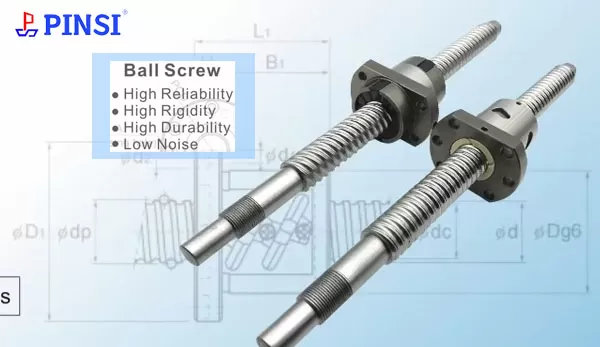1. The Importance of Lubrication in Ball Screws
Lubrication serves multiple essential functions:
● Reducing Friction: Minimizes heat generation and energy loss during operation.
● Wear Protection: Forms a barrier between metal surfaces (screw, nut, and balls) to prevent direct contact and abrasion.
● Corrosion Resistance: Blocks moisture and contaminants, protecting against rust and degradation.
● Heat Dissipation: Helps carry away heat generated by friction, maintaining optimal operating temperatures.

2. Types of Lubricants for Ball Screws
Choose lubricants based on application requirements (load, speed, environment, etc.). The main categories include:
① Lubricating Oils
● Advantages:
○ Excellent for high-speed applications due to low viscosity and good heat dissipation.
○ Easy to apply and circulate in automated lubrication systems.
● Common Types:
○ Mineral oils (cost-effective for general use).
○ Synthetic oils (high-performance for extreme temperatures or heavy loads).
● Application Tips:
○ Viscosity should match the speed: lower viscosity (e.g., ISO VG 32–68) for high speeds, higher viscosity (e.g., ISO VG 100–220) for low speeds.
② Lubricating Greases
● Advantages:
○ Stay in place longer, reducing re-lubrication frequency (ideal for sealed or hard-to-reach systems).
○ Provide better load-carrying capacity and contamination resistance.
● Common Types:
○ Lithium-based greases (versatile for most applications).
○ Polyurea-based greases (high-temperature resistance).
Molybdenum disulfide (MoS₂)-added greases (extreme pressure protection).
● Application Tips:
○ Grease consistency (NLGI grade) should balance mobility and retention: NLGI 1–2 for most applications, NLGI 0 for high speeds.
③ Solid Lubricants (Optional)
● Examples: PTFE coatings, graphite-impregnated materials.
● Use Cases: Extreme environments (vacuum, high radiation) where oils/greases are unsuitable.
3. Wear Prevention Strategies
① Contamination Control
● Sealing Solutions:
○ Install wiper seals (e.g., elastomeric or brush seals) on the nut to block dust, chips, and liquids.
○ Use bellows or protective covers for the screw in harsh environments.
● Filtration:
○ In automated oil systems, use filters (≤ 10 μm rating) to remove particulates.
② Load and Speed Management
● Avoid Overloading:
○ Operate within the ball screw’s rated dynamic load capacity (Cₐ) to prevent plastic deformation of balls or raceways.
● Speed Limits:
○ Exceeding the critical speed (Nₙ) can cause vibration and premature wear. Calculate Nₙ using:
Nc=L/12,000
(where L is the screw length in mm).
③ Alignment and Rigidity
● Precision Installation:
○ Ensure the screw is aligned with the guide rails to prevent misalignment-induced lateral forces.
● Rigid Support:
○ Use pre-tensioned bearings (e.g., angular contact ball bearings) at both ends to minimize deflection under load.
④ Material and Surface Treatments
Hardened Components:
Choose ball screws with induction-hardened raceways (60–62 HRC) for wear resistance.
Surface Coatings:
Apply DLC (diamond-like carbon) or PVD (physical vapor deposition) coatings to reduce friction and corrosion.
⑤ Regular Inspection and Maintenance
● Visual Checks:
○ Look for signs of wear (scoring, pitting, metal debris) or lubricant degradation (discoloration, consistency change).
● Performance Testing:
○ Monitor torque fluctuations, positional accuracy, and noise levels to detect early wear.
● Replace Worn Parts Promptly:
○ If balls or raceways show damage, replace the entire ball screw assembly to avoid cascading failures.
Maximizing ball screw lifespan requires a proactive approach to lubrication and wear prevention. By selecting the right lubricants, implementing proper maintenance schedules, and controlling environmental factors, users can significantly extend component life and maintain system precision. Regular monitoring and timely interventions are key to preventing costly failures in high-value mechanical systems.


 +8615622924499
+8615622924499
 +8615622924499
+8615622924499

